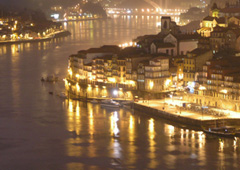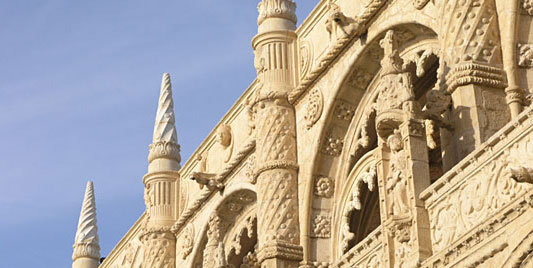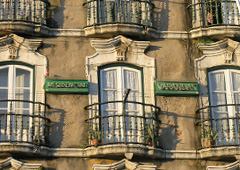Porto
The next morning brought cold rain and an early departure for Porto, further to the north. Portugal’s second largest city and famed for its sweet Port wine, Porto stands gracefully above the northern banks of the Douro River. Arriving on the train, the first thing a visitor will notice are the towering bridges that connect Porto and its more modern neighbour Vila Nova de Gaia. One such span, the Dom Luís I Bridge, arches majestically over the river and brings to mind images of Paris’ Eiffel Tower. This is no accident; the bridge’s designer, Léopold Valentin, was one of Gustav Eiffel’s young protégés.
 The lights of Ribeira glisten in the cool night air, the historic center of Porto, declared a UNESCO World Heritage Site in 1996 (Portugal’s 8th)Parts of Porto, with boarded up buildings and scrawled graffiti, hint at the city’s hard-scrabble past as a shipping port and decades of economic despondency. Closer to the Douro River, the buildings are older and the area more well-preserved. Riberia, belying Porto’s more recent economic struggles, is an exquisite gem of august architecture, fine restaurants and majestic bridges. UNESCO certainly thought so, naming Riberia a World Heritage Site in 1996. Dining on Portugal’s superb cuisine and sweet Port wine with the Don Luis I alight in the darkness as a backdrop is truly a singular pleasure.
The lights of Ribeira glisten in the cool night air, the historic center of Porto, declared a UNESCO World Heritage Site in 1996 (Portugal’s 8th)Parts of Porto, with boarded up buildings and scrawled graffiti, hint at the city’s hard-scrabble past as a shipping port and decades of economic despondency. Closer to the Douro River, the buildings are older and the area more well-preserved. Riberia, belying Porto’s more recent economic struggles, is an exquisite gem of august architecture, fine restaurants and majestic bridges. UNESCO certainly thought so, naming Riberia a World Heritage Site in 1996. Dining on Portugal’s superb cuisine and sweet Port wine with the Don Luis I alight in the darkness as a backdrop is truly a singular pleasure.

 Elegant residences line the streets around the Baixa Pombalina (or Pombaline Lower Town), rebuilt following the devastating 1755 earthquake
Elegant residences line the streets around the Baixa Pombalina (or Pombaline Lower Town), rebuilt following the devastating 1755 earthquake